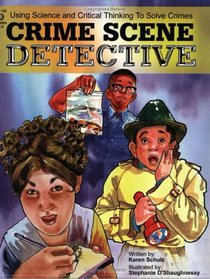Search -
Crime Scene Detective: Using Science And Critical Thinking to Solve Crimes
Crime Scene Detective Using Science And Critical Thinking to Solve Crimes
Author:
Watch the excitement ripple through your classroom as students use their intellect to find out who committed the "crime" at your school. Enliven your students as they practice critical thinking skills. Students are often taught skills such as the scientific method, scientific research, critical thinking, making observations, analyzing facts, and... more »
Author:
Watch the excitement ripple through your classroom as students use their intellect to find out who committed the "crime" at your school. Enliven your students as they practice critical thinking skills. Students are often taught skills such as the scientific method, scientific research, critical thinking, making observations, analyzing facts, and... more »
ISBN-13: 9781593630638
ISBN-10: 1593630638
Publication Date: 6/2005
Pages: 80
Rating: ?
ISBN-10: 1593630638
Publication Date: 6/2005
Pages: 80
Rating: ?
0 stars, based on 0 rating
Genres:
- Reference >> Education >> Workbooks
- Nonfiction >> Education >> General
- Nonfiction >> Education >> Education Theory >> Decision Making & Problem Solving
- Nonfiction >> Education >> Pedagogy




